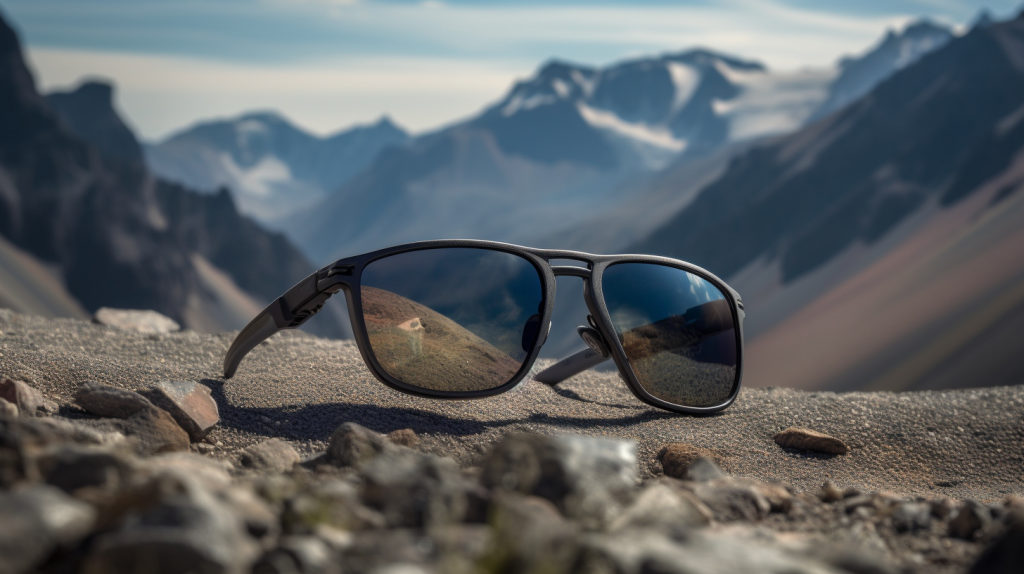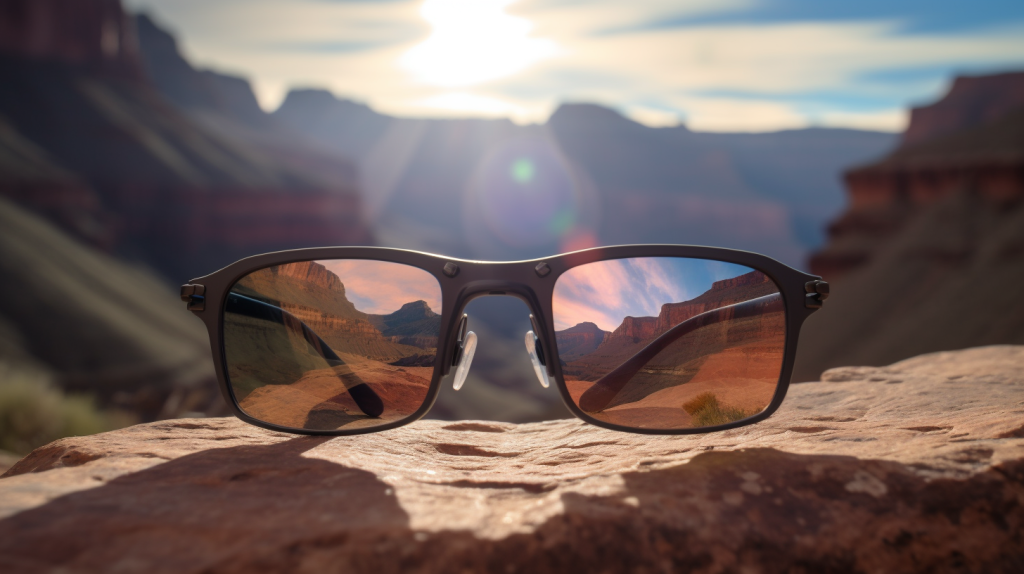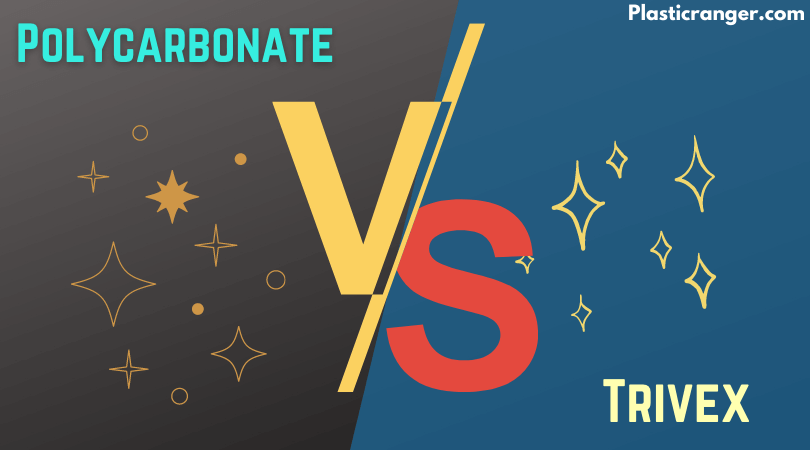Hello people. I hope you’re doing fine. Today I’m going to share the ultimate guide on Trivex vs polycarbonate.
Trivex VS Polycarbonate Lenses
Trivex is a material resistant to impact and has built-in UV protection, similar to polycarbonate. It may be slightly thicker in size due to its lower index of refraction, but it is lighter in weight and can be made to have the same center thickness as polycarbonate.
Eye safety is a sensitive topic, both literally and metaphorically. Polycarbonate and Trivex lenses are the best options for eyeglasses, sunglasses, and sportswear. They’re safe, lighter, thinner, UV-resistant, and 20 times stronger than traditional glass in terms of impact strength. The combination of these fantastic properties makes polycarbonate and Trivex ideal choices for children’s and safety glasses.
Trivex and Polycarbonate lenses will provide a more comfortable, clearer vision making them the safe and convenient choice.
That means both materials can make the best lenses for all our needs. That said, there are still some subtle differences between them that I will try to highlight.
Polycarbonate Lenses

Polycarbonate is an extremely popular and widely used thermoplastic with applications in automotive, electronics, agriculture, building applications, bulletproof applications, and lenses. Polycarbonate lenses are made from injection molding.
Eyeglass lens made from polycarbonate was launched in the 1980s to cater to the demand for lightweight, impact-resistant glasses. Although more expansive than traditional glass lenses, polycarbonate lenses offer durability, UV protection, and better clarity of vision. They are also cost-effective compared to Trivex lenses.
Polycarbonate was invented in 1953 by Bayer’s Dr. Hermann Schnell and General Electric’s Dr. Daniel Fox. It was introduced in the 1970s publicly with aerospace programs and activities. The material was used for high-end applications like helmet visitors and space shuttle windshields, proving the material’s durability.
After polycarbonate’s introduction into the lens market, it became the staple for safety glasses, children’s eyewear, and sports goggles. Due to their durability to withstand fractures, polycarbonate lenses are used extensively for rimless and semi-rimless eyeglasses. The lenses are joined with the frame components using drill mountings.
Interesting Read – The Best Polycarbonate Glue | How to Glue Polycarbonate Properly?
Most other plastic lenses are made from a cast molding process wherein a molten plastic material is baked for long extensions of time in the shapes of lenses, causing the liquid plastic solid to form a lens.
However, polycarbonate lenses are made in Injection molding machines. Their journey starts in the form of plastic granules. The granules are heated until they melt. The liquid polycarbonate is then transported into a mold and compressed under high pressure, and the molten material turns into a solid lens.
Trivex Lenses

Despite all the pros, Polycarbonate isn’t the only alternative to glass for making fantastic lenses for children’s eyewear and safety applications.
Just like polycarbonate, Trivex was not originally developed for eyewear use. It was developed considering the need for durable military jet windshields and similar military applications. In 2002, PPG Industries developed a chemical process with material used explicitly for eye lenses. Trivex also scores very high on the durability index, is lightweight, and has excellent UV protection capabilities.
Both materials have almost similar types of properties, except there is one significant factor difference which is the Abbe value. So what is Abbe’s value? The scale used to measure the clarity of varying lens materials is called the Abbe value. The higher the number, the clearer the lens.
Trivex lenses are handy for rimless glasses, where small holes are drilled to attach the glasses to the frame. Thanks to trivex lenses’ phenomenal tensile strength are less likely to crack at this connecting point compared to other lens materials.
The trivex lens material shines in the area of lightweight. Its specific gravity (density per unit volume) is the lightest of other materials for making eye lenses. That makes eyeglasses made from trivex very comfortable, and to your relief, it is unlikely that they will slide down the bridge of your nose.
Here’s a table explaining the Abe value of major lens materials:
| Material | Abbe value |
| Crown Glass | 59 |
| Plastic CR-39 | 58 |
| Trivex | 42-45 |
| Mid-index plastic | 36-47 |
| High-index glass | 39-42 |
| High-index plastic | 32-36 |
| Polycarbonate | 30 |
Trivex lenses have a higher Abbe value than polycarbonate because they comprise a urethane-based monomer, which refracts less light. A certain deviation is expected when lenses are made from materials with a lower Abbe value. The wearer may notice fuzzy rainbow halos around lights. Thanks to their high ABBE value, Trivex lenses will undoubtedly offer better clarity and visual experience than polycarbonate lenses.
Engaging Read – How to Cut Polycarbonate | A Complete Analysis
Trivex VS Polycarbonate Lenses: Which One is the Best For You
Here’s a short comparison of both polycarbonate vs trivex lenses to let you decide the best one for you:
Weight: Trixex has a lower specific gravity than polycarbonate making its lenses 10-12% lighter than polycarbonate lenses.
Thickness: Polycarbonate has a higher rate of refraction than Trivex (1.58 vs. 1.53). So, polycarbonate lenses are 10% thinner than Trivex lenses.
Optical clarity (central): Trivex lenses have lower internal stress, possibly providing a shaper central vision than polycarbonate lenses.
Optical clarity (peripheral): Trivex lenses possess a higher Abbe value, and many produce shaper peripheral vision and minor chromatic deviation than polycarbonate lenses.
Cost: The cost for polycarbonate and Trixex lenses varies a lot. But in general, almost all the optical stores will charge a bit more for Trivex lenses than polycarbonate lenses.
Impact Resistance: Both polycarbonate and Trivex have comparable impact-resistant properties.
UV protection: Polycarbonate and Trivex lenses can block 100% of the sun’s UV rays without using any external UV-blocking lens coating.
Availability: Regarding available varieties, polycarbonate lenses have an edge – progressive lenses and other multifocal lenses. However, Polychromic lenses are available in both materials.
FAQs

Below are some frequently asked questions on polycarbonate vs trivex. Let’s dive in to know more.
How can you tell the difference between polycarbonate and plastic lenses?
There’s a simple technique to differentiate between the two. Try to edge by hand; if strips are attached to the edge, it’s polycarbonate. Hit it with a hammer; it’s a polycarbonate if it doesn’t break and bounce. If the optics are not as clear as glass, it’s polycarbonate.
Can you remove scratches from polycarbonate glasses?
An easy method to remove scratches from polycarbonate is to squeeze a pea-sized amount of toothpaste on a soft, clean cotton cloth. Rub the toothpaste on the scratched surface in a circular motion continuously for 10-20 seconds. Dip a clean, soft cotton cloth in cool water. Rub the wet cloth over the lens and remove the excess toothpaste.
How do you clean polycarbonate lenses?
The following is the recommended cleaning procedure for polycarbonate lenses;
- Rinse with warm soapy water
- Rinse with clean, clear water
- Rub with a soft, clean, cotton cloth.
Do Trivex lenses block blue light?
Trivex lenses won’t be able to block blue light. However, manufacturers tend to add blue-light blocking polymer in the lens material to make it compatible with blocking blue light and combat the effects of digital eye strain. Plastic glasses generally struggle to block blue light, but significant development has made them much less susceptible to blue light than before.
What is the difference between Trivex and high index lenses?
Trivex possesses a low index of 1.53, similar to standard plastic. High index plastic’s index ranges from 1.67 to 1.74, making it thinner and more lightweight than Trivex. However, there is no difference in their scratch resistance properties.
Suggested Read
- Antistatic vs. Static Dissipative Plastics | Which One to Choose?
- What are the Top 5 High Tensile Strength Plastics?
- Which is the Best Acrylic Glue? | The Best Plexiglass Glue
- What is PLA Plastic (Polylactide)? | A Simple and Definitive Guide
- What is PTFE (Polytetrafluoroethylene)? | The Complete Guide
- Food Grade Plastic: The Best Plastics for Food Applications
- What is PETG Material? | The Definitive Guide
The Conclusion
In conclusion, while Trivex and polycarbonate lenses offer exceptional durability, UV protection, and impact resistance, the choice largely depends on individual requirements. Trivex is known for its superior optical clarity and lighter weight, making it comfortable for daily wear. Polycarbonate, however, is a budget-friendly option that excels in terms of strength, suitable for high-risk environments. Understanding these differences allows consumers to choose based on their specific needs.
Please feel free to express your opinions in the comment box below. May your day be filled with joy and happiness.
Quick Navigation


